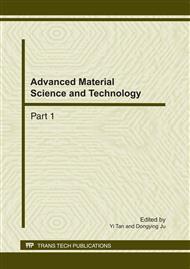p.1197
p.1201
p.1205
p.1209
p.1213
p.1217
p.1221
p.1225
p.1229
The Fabrication of W-Cu Modified Layers on the Surface of the Continuous Casting Machine Mould Copper Plate by Infiltration
Abstract:
In this paper, a new method named infiltration was applied to fabricate W-Cu surface modified layers of copper mould firstly in order to promote the life span of the continuous casting machine (CCM) mould. Our efforts concentrated on fabricating the W-Cu modified layers on the surface of mould copper plate by presintering and infiltration under inert gases. The W particle size and sintering temperature of W skeleton were adjusted to gain homogeneous microstructure of W-Cu modified layers. The results show that homogeneous microstructure of W-Cu modified layers can be obtained with the method of presintering and infiltration. For the excellent microstructure of W-Cu modified layers, the suitable tungsten particle size is 300 meshes and the optimal presintering temperature is about 1300°C. W-Cu modified layers have good bonding strength with copper substrate.
Info:
Periodical:
Pages:
1213-1216
Citation:
Online since:
February 2011
Authors:
Price:
Сopyright:
© 2011 Trans Tech Publications Ltd. All Rights Reserved
Share:
Citation:


